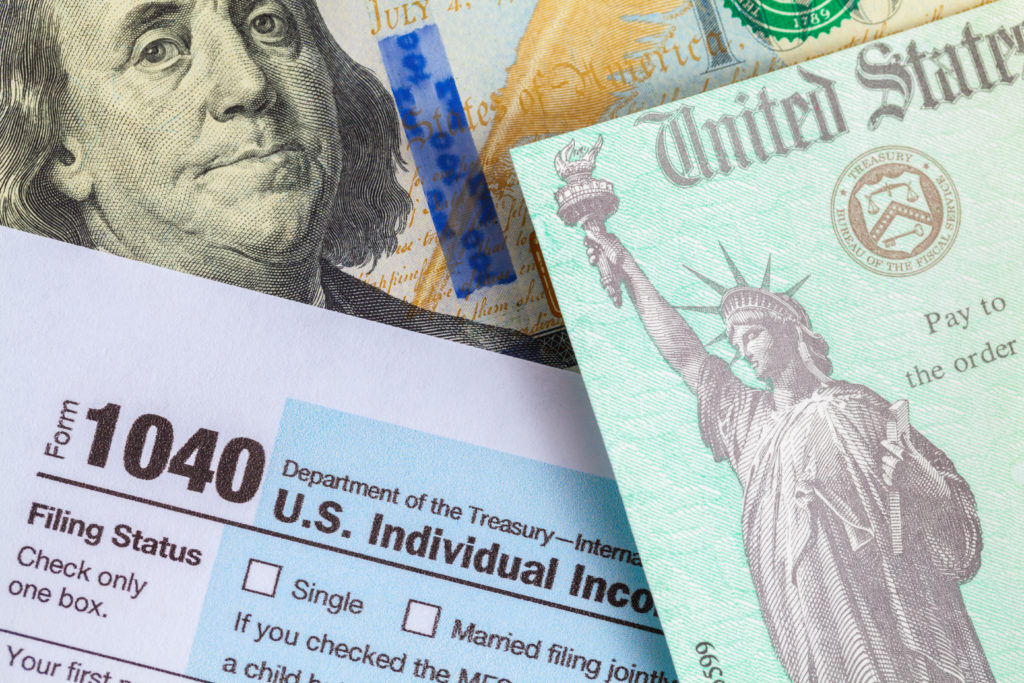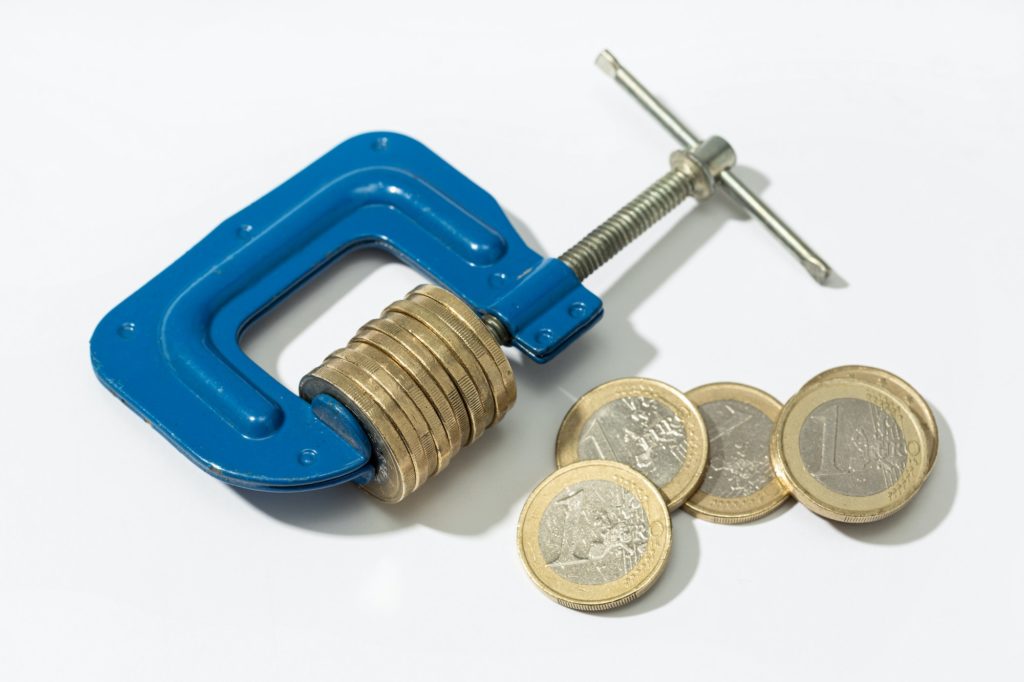There was time in my blogging career where I’d be more apt to dedicate writing energy toward topics like “Top 5 Carrie Bradshaw Breakups” than anything related to business, let alone taxes.
However, a major mishap I made back in 2007 when I transitioned to being self-employed made me change my tune quickly.
Let’s just say I needed a new pair of pants when I realized I owed the IRS a lot of money because I didn’t properly prepare for things beforehand.
I get it. It’s not lost on me that most fitness pros reading would rather me write about assessment or how to turn people into deadlifting T-1000’s. I do plenty of that. Today’s post, though – courtesy of fitness business expert Billy Hofacker – is what most fitness professionals NEED to be ingesting.
I hope it helps (it totally will).

5 Things Fitness Professionals Need to Consider When It Comes to Taxes
Most fit pros are afraid of taxes. They can be scary, especially if you don’t understand some basics. Not keeping up with and paying your taxes can get you into trouble.
Here is some good news.
With some basic information and planning, you can avoid some pretty unpleasant traps. Also, while nobody likes paying them, owing for taxes means you are making money! Besides, if you work independently as a coach, you get to dress more comfortably for work than many of your peers!
If you have employees, you need to deposit a certain amount withheld from them for taxes or you could be in trouble. If you have products you sell and use the sales tax money for other things, you won’t make it.
As a general rule, you’ll want to set aside a percentage of your profit into a separate savings account so you can pay quarterly estimates to the IRS. Without getting too sophisticated and if you don’t have historical data from your business to look at, 25% is a good place to start.
For example, if you are going to pay yourself $1,000 from your business, take $250 and deposit it into your tax savings account and the remaining $750 would go to you.
In my early days as an independent trainer I neglected to do this. I accumulated a six thousand dollar liability with the IRS and had to pay it off over the following 2 years while building my career. That was over a decade ago. Since then, by incorporating this strategy of withholding taxes on myself, I have not had the tax man after me since!
*To Discover the Tool I Used to Pay Down That Debt and Much More, Download the Debt Destroyer Tool.
Note From TG: I’m a huge proponent of the Profit First approach to running your business. When I left Cressey Sports Performance in 2015 to begin my own venture in Boston I immediately adopted this system and have been thriving off it since. Having a set plan to know where your money is going at the end of each month to plan for things like taxes, business expenses, and PAYING YOURSELF is crucial. I can’t recommend the book enough. I’m also way more jacked now than I was then. Coincidence?
The above scenario applies to you if you are taxed as a Schedule C or partnership. You will have to pay quarterly estimates to the IRS for income tax. If you are taxed as an S-corp, you pay payroll taxes on any salaries paid to employees, including you.
As an S-corp, you can pay the amount of taxes needed through the payroll taxes in order to cover any tax liability. This helps ensure you are always up to speed with your tax payments and hopefully it’s an example of “out of sight, out of mind.”
I personally use that method and it has taken away my tax stress.

Finally, when you have some actual historical data, like previous personal and business tax returns, you can work with your accountant to determine the percentage of revenue that goes to taxes. You can also determine, with your accountant1, what the estimated tax responsibility for your business will be and turn that into a percentage of revenue.
You can then transfer that amount into a tax savings account every two weeks or so and use those funds to either pay your estimates (e.g. Schedule C) or reimburse yourself for the taxes the business paid (e.g. S-Corp).
The important thing to remember is that regardless of how your business is structured, you pay taxes on profit and not profit distributions.
For that reason, you will want to be sure to…
1. Keep Good Records
Hopefully, you’re not just handing your accountant a shoe box full of receipts at the end of the year. I used to know someone who did that.:)

In all seriousness, paper receipts for deductible items are fine but you may want to keep digital copies as well just to be safe. Taking pictures, scanning them, or using one of the many receipt/expense apps works. Other than that you’ll want to keep good records of what’s coming in (income) and what’s going out (expenses).
Other than staying organized for taxes, this will help you stay focused on how much you’re making.
2. Bookkeeping
Do you know the difference between credits and debits? Assets vs. liabilities? While it’s probably not why you got into a fitness career, some bookkeeping basics will serve you well.
Even if you’re not ready to take a college level accounting course, you might want to look into accounting software. Besides helping you prepare for taxes, you can keep track of invoices and billing, as well as run financial reports to help guide you.
Then when tax time comes, you’ll have things organized and an efficient way to access your income and expense history.
Finally, as you grow in your career, it’s wise to evaluate the best uses of your time. While in the beginning, it may make sense to do everything yourself, at some point it may make more sense to hire a professional bookkeeper so you know things are done correctly and you can focus on your highest value priorities.
Just like any area, there are good bookkeepers and not so good ones. I know from experience. If you go that route, be sure to hire someone who understands at least basic accounting and how financial statements flow together.
3. Know What You Can Deduct
A smart and wealthy client advised me early on to take any ethical deduction possible. Some of the bigger potential items to look at are travel, home office (Schedule C and Partnerships), and health insurance. Self-employed individuals can take some deductions “above the line.”
This means they can still take the standard deduction while also writing off some more items.
It’s important to know here that you can take a standard (flat) deduction or itemize all your deductions based on your expenses. Most Fit Pros will take the standard deduction route since it’s easiest but if you have a lot of expenses it may make more sense to itemize.
Do your homework and know what’s best for you.
4. Take Care of Your Future Self
People who work for big companies generally have an employer who sets up a retirement plan for them. Oftentimes, they get a company match. Since you may not have either of these luxuries, you’ll need to develop the discipline to take a portion of your income and set it aside for your big, beautiful future.

With that said, there are some benefits here when it comes to tax season.
A self-employed individual can contribute up to 25 percent of net earnings, to a max of $61,000 in 2022, to a Simplified Employee Pension (SEP) IRA. Additionally, up to $14,000 can be contributed to a SIMPLE IRA. Those IRA contributions, which are above the line, may be tax deductable.
5. Where’s All My Money?
Fit pros are often confused when the end of the year comes and they owe taxes but don’t have the money to show for it. I hear comments like, “How can I be taxed?” I don’t have any money.
They simply don’t know what they don’t know.
There is a major difference between profit and net cash. I highly encourage you to track your profit but be equally diligent about tracking your “net cash.”
Net cash is used to see how much cash is left after expenses and owner’s distributions. Since owner’s distributions don’t count as “expenses,” they can cause a Fit pro to think they are doing better than they are. This is one of the biggest misunderstood things for fitness business owners
The #1 rule in business is not to run out of cash! With a plan for preparing for taxes and an understanding of cash flow, you’ll be on your way to making a massive impact AND creating a career you love.
About the Author
Billy Hofacker has been a personal trainer for over 20 years and is owner and CEO of Total Body Boot Camp and Performance Center in the hyper competitive market of Long Island, NY.
Billy is now passionate about helping fitness professionals become financially fit.
He is the author of Fitness Profits as well the host of the leading financial podcast for fit pros, Your Fitness Money Coach Podcast.
You can book a free 15 minute Q&A call with him here. During that call, you can discuss and financial challenges to see if a personalized plan might be a good fit.



